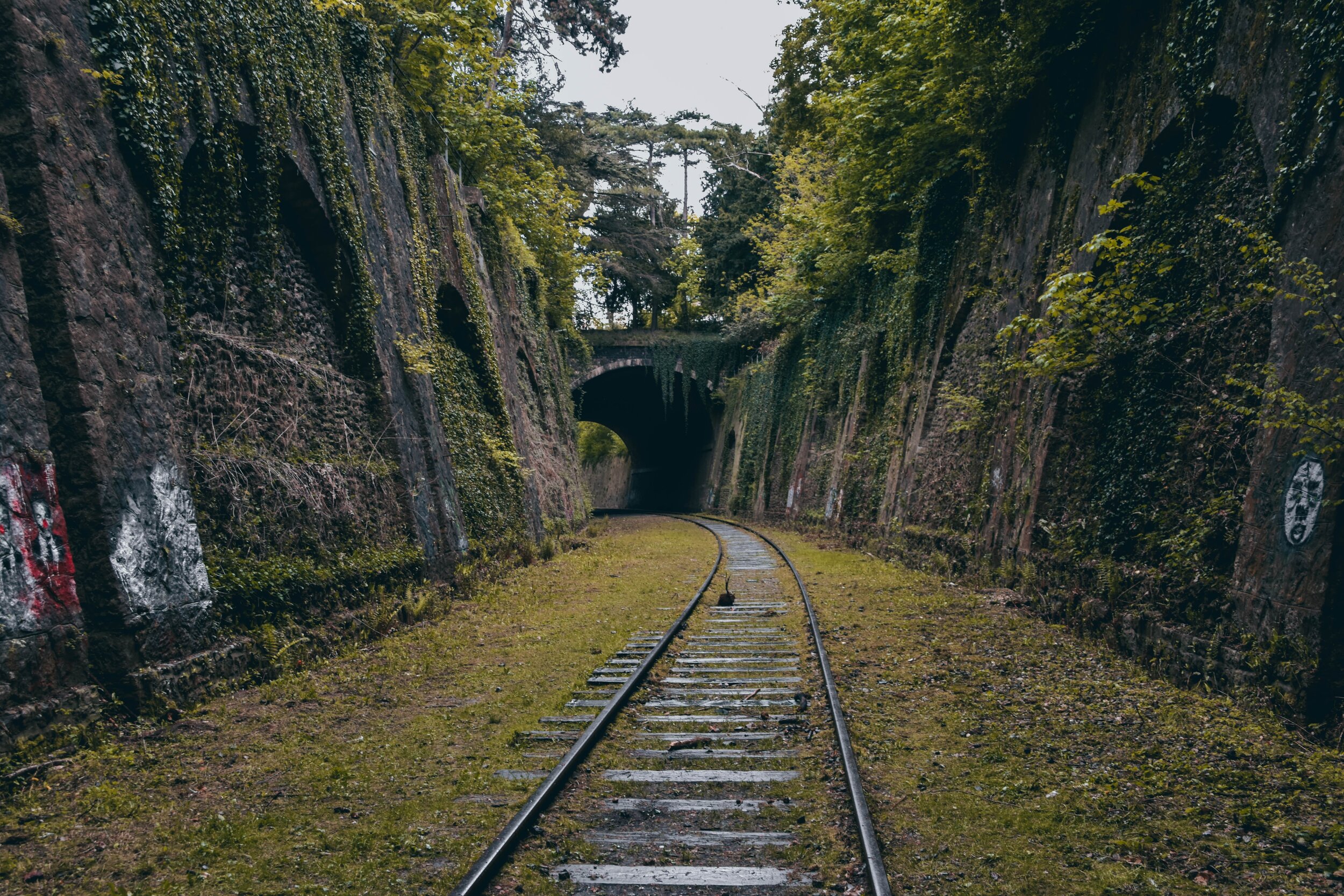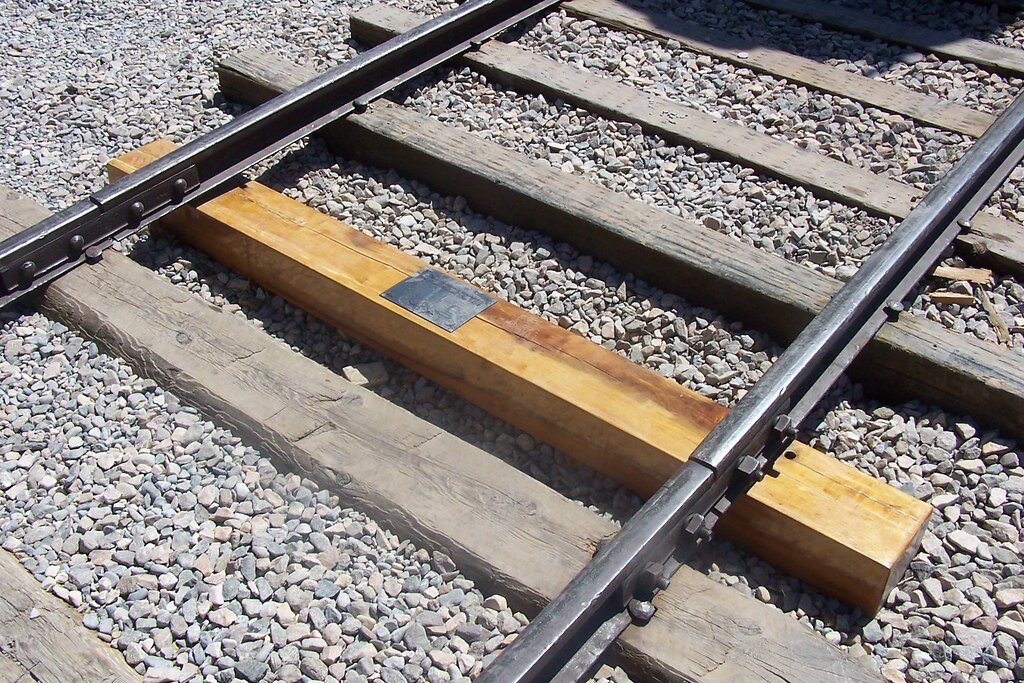Abandoned railroad tracks are everywhere. Although many trains are still running, they rarely hold the same mysterious charm as the ones that have been neglected. To many, trains signify a bygone era, an old means of transportation, and an opportunity to see the world without the drama of plane flights. While many enthusiasts have created databases of abandoned railroads, there has also been a wave of people who are remodeling these railroads to give them a new purpose and life.
The golden point of the Transcontinental Railroad. J. Stephen Conn. CC BY-NC 2.0
Golden Spike National Historical Park
The Golden Spike National Historical Park is home to the “golden spike,” the final spike needed to complete the United States’ Transcontinental Railroad. Located in Promontory, Utah, this park attracts about 60,000 visitors each year. While the site has an abundance of offerings, its main attraction is the “golden spike” itself. The Transcontinental Railroad was built over a period of six years, with the last spike being laid in 1869. It is worth noting that the Transcontinental Railroad was actually built by two separate companies, the eastbound Central Pacific Railroad and the westbound Union Pacific,. Nevertheless, the Transcontinental Railroad was a symbol of western progress at the time and finishing the railroad was cause for major celebration. The park hosts reenactments of the event every year on May 10, with last year being a celebration of the 150th anniversary of the Transcontinental Railroad’s completion.
A view from New York City’s High Line. Finchermac. CC BY-ND 2.0
The High Line
Located in New York City, the High Line is a refurbished railroad track that allows visitors to enjoy a picturesque 1.45-mile walk above Manhattan’s West Side. The line became fully operational in 1933 and transported supplies such as meat and produce, but it declined in use in the 1980s as people began to favor trucking for supply delivery. Although the High Line was set for demolition, a new project gained traction in the early 2000s that allowed for its conversion. Today, the High Line has integrated a multitude of sustainable practices, community engagement initiatives and small businesses into the overall experience. The walkway is adorned with over 500 different species of plants and trees and there are regular art installations that are either on the High Line or can be seen from it.
A shot of the High Trestle Trail Bridge lit up at night. Tony Webster. CC BY-NC-SA 2.0
High Trestle Trail
The High Trestle Trail, a multi-use 25-mile trail on the outskirts of Des Moines, Iowa, is a popular biking and outdoor activity destination. The High Trestle Trail is one of many rail-to-trail projects, with this one opening in 2011. There are a multitude of amenities nearby, such as a bike shop, restaurants and visitor centers, but the trail itself contains the top points of interest. One such location is the High Trestle Trail Bridge, which has been dubbed “Iowa’s Stonehenge.” After the railway was decommissioned in 2003, Union Pacific wanted to reuse the steel beams of one of the bridges on the route but had no use for the original support structure. The company left 22 huge, 130-foot-tall concrete pillars which used to hold up the bridge. As interesting a landmark as this was, the Iowa Natural Heritage Foundation realized that these poles could have a more practical purpose. After an extensive project costing over $1.75 million, the bridge was revamped and now stands as an impressive light-up art installation that is an ode to the area’s mining history.
Nature, art and train tracks. French_Villain. CC BY-NC-SA 2.0
La Petite Ceinture
This railroad is quite different from the others. It is located in Paris, France, and contains one of the best access points to the city’s catacombs. Additionally, this abandoned rail line is home to an abundance of graffiti and artwork. In terms of natural life, the area is now home to more than 200 different plant species and more than 70 types of animals. La Petite Ceinture was built intermittently between the years of 1852 and 1869 but has been unused since 1934. While the tunnels themselves can be dark and less than pleasant, the open areas of La Petite Ceinture offer an intriguing destination and a beautiful example of how people might organically reclaim abandoned spaces.
Phoebe Jacoby
is a Media Studies major and Studio Art minor at Vassar College who believes in the importance of sharing stories with others. Phoebe likes to spend her free time reading, drawing, and writing letters. She hopes to continue developing her skills as a writer and create work that will have a positive outward effect.






